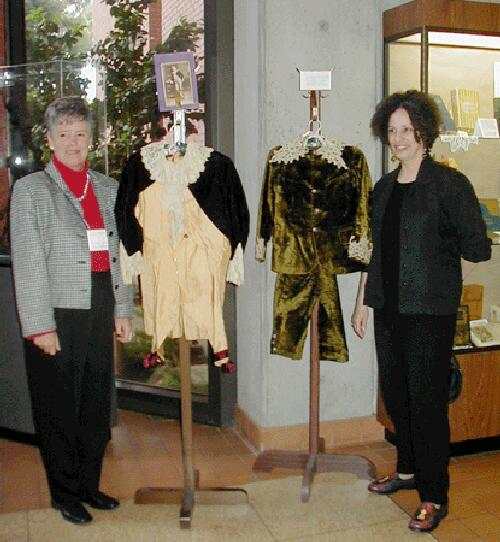
Figure 1.--This image form the Frances Hodgen Burnett Society shows two actual outfits that Mrs. Burnett sewed for her boys. |

|
Fancy velvet suits for boys was not a style created by Frances Hodgson Burnett. In fact, the style was an anomaly in American boys' clothing, which was generally much less fancy than European styles. Mrs. Burnett's book, however, helped make the style the height of fashion for a generation of American boys. While fancy velvet suits were available before Mrs. Burnett published her book, there was nothing like the outpouring of belaced and beruffled suits that filled clothing stores after the publication of the book. I am unsure as to just what was Mrs. Burnett's inspiration for the imaginative styles in which she dressed her
boys. The fancy velvet suits appear to be a version of Cavalier or Royalist costume of the 17th century English Civil War. Interesting nearly a decade before the publication of Mrs. Burnett's book, the Yeames painting of a brave little boy in the light blue suit (And
when did you last see your father?) appeared. Mrs Burnett did not invent the costume. Elegant velvet suits had become recognized dress for small boys as a variant from the ubiquitous sailor for every day wear. [Roger Lancelyn Green (Tellers of Tales, 1946.] Velvet suits were being worn in the 1860s, although not will all the Fauntleroy trimmings. Velvet suits can be seen in illustrations in Aunt Judy's Magazine and Little Folk from the beginning of the 1880s. The clothing styles popularized in Mrs. Burnett's book were based on the clothes that she personally designed and sewed for her two sons, Vivian and his older brother Lionel. She personally hand sewed much of the boys' clothing herself. At first when they were young, is was primarily to economize. It eventually, however, became a labor of love and continued as the boys grew older. The young Mrs. Burnett's sewing skills were enhanced by the young woman author's romantic imagination.
While fancy velvet suits were available before Mrs. Burnett published her book, there was nothing like the outpouring of belaced and beruffled suits that filled clothing stores after the publication of the book. We are unsure as to just what was Mrs. Burnett's inspiration for the imaginative styles in which she dressed her
boys. The fancy velvet suits appear to be a version of Cavalier or Royalist costume of the 17th century English Civil War.
The artist often cited as the historical jnspiratioin is Antoon Van Dyck. There are other artists illustrating the era such as Dutch artist, Thomas de Keyser. Interesting nearly a decade before the publication of Mrs. Burnett's book, the Yeames painting of a brave little boy in the light blue suit (And when did you last see your father?) appeared. Burnett may have drawn on such art or even the famous Gains borough paintings (Blue Boy and Pink Boy) for inspiration in dressing her sons. The Birch illustrations and the Yeames version are not dissimilar, though Fauntleroy is always drawn as wearing a large decorative sash (even when wearing what looks like a sailor suit on board ship) and his curly locks are much longer than the un-ringletted boy in the painting,
Mrs Burnett did not invent the costume. Elegant velvet suits had become recognized dress for small boys as a variant from the ubiquitous sailor for every day wear. [Green] Velvet suits were being worn in the 1860s, although not will all the Fauntleroy trimmings. Velvet suits can be seen in illustrations in Aunt Judy's Magazine and Little Folk from the beginning of the 1880s. A woman's magazine in 1885, a few months before the story appeared in St. Nicholas, described a suit "for a little fellow of seven". It was a velvet suit with a Vandyke collar. The suggested collar was sapphire blue with a sash of pale pink which one author later commented made Cedric's black suit seem almost austere. Mrs. Burnett must have drawn on these developing styles in the suits she fashioned for her boys. While she did not invent the suits, her book and illustrations undeniably popularized the fashion for a generation of little and not so little boys.
The clothing styles popularized in Mrs. Burnett's book were based on the clothes that she personally designed and sewed for her two sons, Vivian and his older brother Lionel. She
personally hand sewed much of the boys' clothing herself. At first when they were young, is was primarily to economize. It eventually, however, became a labor of love and continued as the boys grew older. The young Mrs.
Burnett's sewing skills were enhanced by the young woman author's romantic imagination. After her success as an author she probably has a seamstress do the work, but almost surely continued to design the boys' outfits herself. She used the English Restoration Era (restoration of the Stuarts) when lace, ruffles, long
flowing hair, and ribbons were used in men's clothes. The result was the flamboyant page-boy costume popularized in her book and accompanying illustrations. The drawings pictured a velvet suit with knee-length pants, a deep lace collar and cuffs, a red or black satin sash, long hair, and a picturesque plumed hat.
Green, Roger Lancelyn. Tellers of Tales, 1946.
Navigate the Boys' Historical Clothing Fauntleroy pages:
[Return to the Main actual Fauntleroy suit page]
[Fauntleroy dresses]
[Fauntleroy blouses]
[Fauntleroy movies
[Lace collars]
[Collar bows]
[Vivian Benett]
[Fauntleroy patterns]
[Literary characters: Cedric Erol]
Navigate the Boys' Historical Clothing Web Site other related pages:
[Return to the Main Fauntleroy suit page]
[Return to the Main Fauntleroy blouse page]
[Dresses]
[Kilts]
[Smocks]
[Pinafores]
[Velvet]
[Sailor Hats]
[Blouses]
[Ring Bearers]
[Long hair]
[Ringlet curls]
[Bangs
[Main bow page]
[Sashes]
[Hair bows]
[Lace collars]
[Ruffled collars]
Navigate the Boys' Historical Clothing Web Site:
[Introduction]
[Activities]
[Biographies]
[Chronology]
[Clothing styles]
[Countries]
[Bibliographies]
[Contributions]
[FAQs]
[Glossaries]
[Images]
[Links]
[Registration]
[Tools]
[Boys' Clothing Home]
